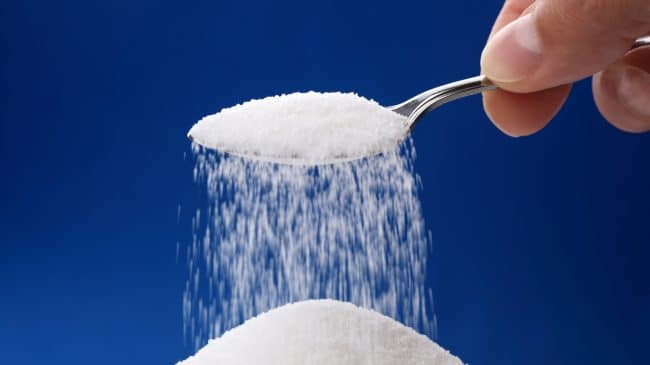In a few short years, anti-sugar hysteria has metastasized from a heated debate in nutritional science to a global network of fanatical campaigners banging the drum for taxes, marketing restrictions, and interventions in the food supply.
The plan of these campaigners is clear, to frame sugar and particularly the soda industry as the new “Big Tobacco.” Soda is the new smoking and the tobacco control playbook should be used to clamp down on the industry that sells it, according to these activists.
A key plank in their narrative was unveiled in 2016, with the publication of a paper in the Journal of the American Medical Association. The paper reveals that an evidence review from 1967 which argued fat, not sugar, was a major contributor to heart disease was funded by the Sugar Research Foundation. This funding, activists claim, is evidence of an industry trying to distort science in the name of profit.
Note, the JAMA paper did not seek to challenge the 1967 review’s conclusions or answer substantive questions about the potential dangers of fat or sugar. It simply pointed to the funding source and let the media do the rest. The media duly exploded with stories of ” How the sugar industry has distorted health science for more than 50 years” and ” The sugar industry used Big Tobacco-techniques.”
But framing these scientists, Robert McGandy, Mark Hegsted, and Fredrick Stare, as hired guns pushing an anti-fat agenda not supported by the available evidence, is a gross mischaracterization of history.
By 1967, Hegsted was already a well-known and respected nutrition researcher. In 1965, two years before he received SRF funding, Hegsted published a paper titled “Quantitative Effects of Dietary Fat on Serum Cholesterol in Man.” His research gave rise to the “Hegsted equation,” which claims cholesterol and saturated fats from certain foods raise harmful cholesterol levels.
An article published in Science by Columbia University’s David Merritt Johns and Gerald M. Oppenheimer of the City University of New York, which challenges the sugar conspiracy narrative, explains: “As we have shown, by the 1960s the paradigm that dietary fat was a likely risk factor for heart disease prevailed among a coalition of scientists closely linked with NIH and AHA and was based on extensive research.”
Claiming there was anything like a consensus in the sugar vs. fat debate in the 1960s, let alone today, is to ignore the actual history of nutritional science. Indeed, when the JAMA paper was published, Hegsted was defended by Harvard School of Public Health’s professor Walter Willett.
“He was a very hard-nosed, data-driven person, who had a record for standing up to industry interests,” said Willett. “I very much doubt that he changed what he believed or would conclude based on industry funding.”
The pernicious idea at the heart of the JAMA paper is that research funded by industry is automatically suspect, while research funded by the government is inherently objective. “Follow the money” arguments by themselves are near useless in determining the truth of scientific claims. Researchers funded by the government are no more objective than those funded by industry. Furthermore, non-financial biases can be just as important as financial ones.
Indeed, what the media missed in their hyperbolic coverage of the JAMA study is that some of its authors have interests and biases of their own.
Dr. Cristin Kearns, one of the JAMA paper’s authors, is part of numerous anti-sugar projects and is a co-author of the article ” Big Sugar’s Sweet Little Lies — How the industry kept scientists from asking: Does sugar kill?” Scientists have an interest not just in discovering truth but in advocating for the theories and policies they believe in. Perhaps unsurprisingly, the evidence reviewed by Hegsted and colleagues confirmed in their minds Hegsted’s previous work.
Furthermore, the JAMA article itself admits “there is no direct evidence that the sugar industry wrote or changed the NEJM review manuscript; the evidence that the industry shaped the review’s conclusions is circumstantial.”
But there’s yet another wrinkle in the theory that Hegsted was an industry shill. When Hegsted helped draft the 1977 Dietary Goals for the United States, they recommended cutting sugarconsumption by 40 percent to account for 15 percent of daily intake. When these goals were revised, it was recommended sugar consumption be cut by 45 percent to account for 10 percent of daily intake. Recommending cuts to sugar consumption is hardly the actions of an industry puppet.
Taken together, the sugar conspiracy narrative is more a product of the overactive imaginations of passionate campaigners than of an industry plot to distort science.
As Johns and Oppenheimer explain in their critique of the JAMA paper: “Our analysis illustrates how conspiratorial narratives in science can distort the past in the service of contemporary causes and obscure genuine uncertainty that surrounds aspects of research, impairing efforts to formulate good evidence-informed policies.”
Neither Johns nor Oppenheimer are defending the sugar industry or taking sides in the fat vs. sugar debate. But what they illustrate with admirable clarity is how distortions of the past can shape our understanding of the present when activists believe they are on the right side of history.
This column originally appeared in the Washington Examiner.

